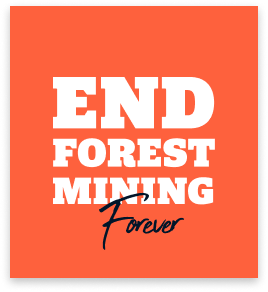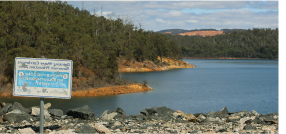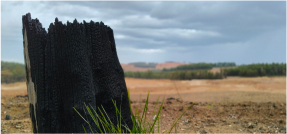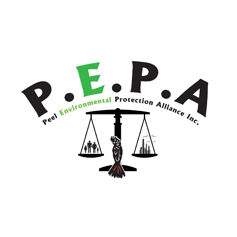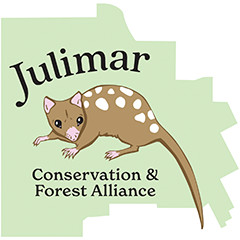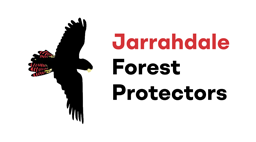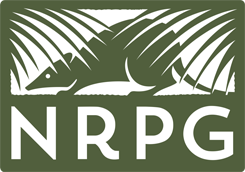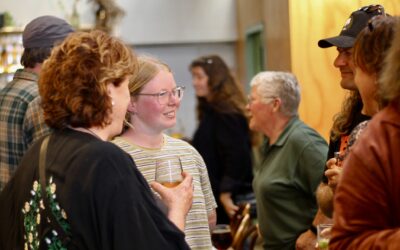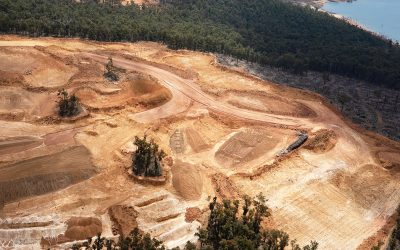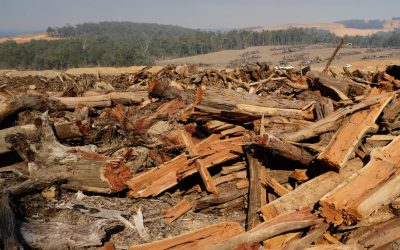Together, we can end forest mining.
The Northern Jarrah Forests are some of Earth’s most beautiful yet vulnerable forests. They are home to many unique plants and animals and tens of thousands of years of Noongar heritage.
Bauxite mining companies Alcoa and South32 have already cleared tens of thousands of hectares over the last 60 years. Massive expansions will threaten critical drinking water supplies and air quality, impact world-class trails and destroy vital carbon stores and habitat for threatened wildlife.
What is bauxite, and what is it used for?
Bauxite is a sedimentary rock, abundant in the Northern Jarrah Forest. Most of the bauxite mined in the Northern Jarrah Forest is refined into alumina, which is then further refined to make aluminium for a variety of products.
Alcoa sells most of its WA alumina to third parties worldwide. South32 ships about 60 percent of its WA alumina to its aluminium smelters in southern Africa.
Where is the bauxite processed?
The bauxite from the Northern Jarrah Forest is processed into alumina at four refineries in the South West. Alcoa has three alumina refineries, at Kwinana, Pinjarra and Wagerup. South32 has a refinery further south at Worsley, near Collie.
The extraction of alumina from bauxite through the Bayer process produces a highly toxic caustic residue – ‘red mud’ – which is stored in large dams or ponds. Local communities in the South West have campaigned long and hard against the deleterious impacts on them from air and noise pollution from the alumina refineries.
What impact does the clearing and mining have on wildlife?
The Northern Jarrah Forest is habitat for rare, threatened and endangered species including the three black cockatoo species, Muir’s corella, southern brown bandicoot, western quoll, dibbler, two species of phascogale, mainland quokka, numbat, woylie, Tammar wallaby, western ringtail possum and frog species.
For every one of those species, habitat loss and fragmentation is a major contributor to their decline. Further, the Recovery Plans for each species refer specifically to threat from mining. What remains of their existing habitat needs to be conserved if they are to survive.
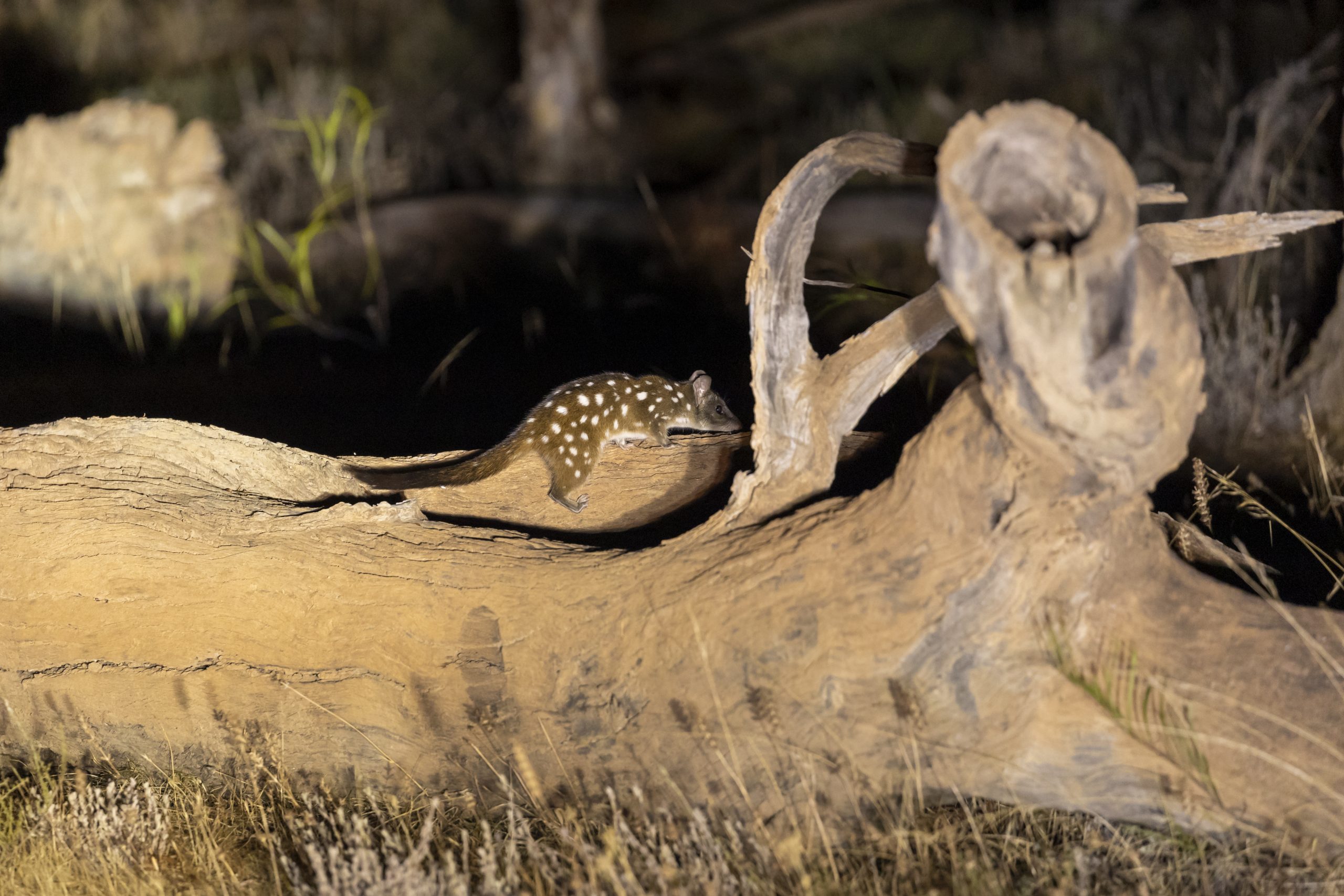
Chuditch (Image: Clarissa Human)
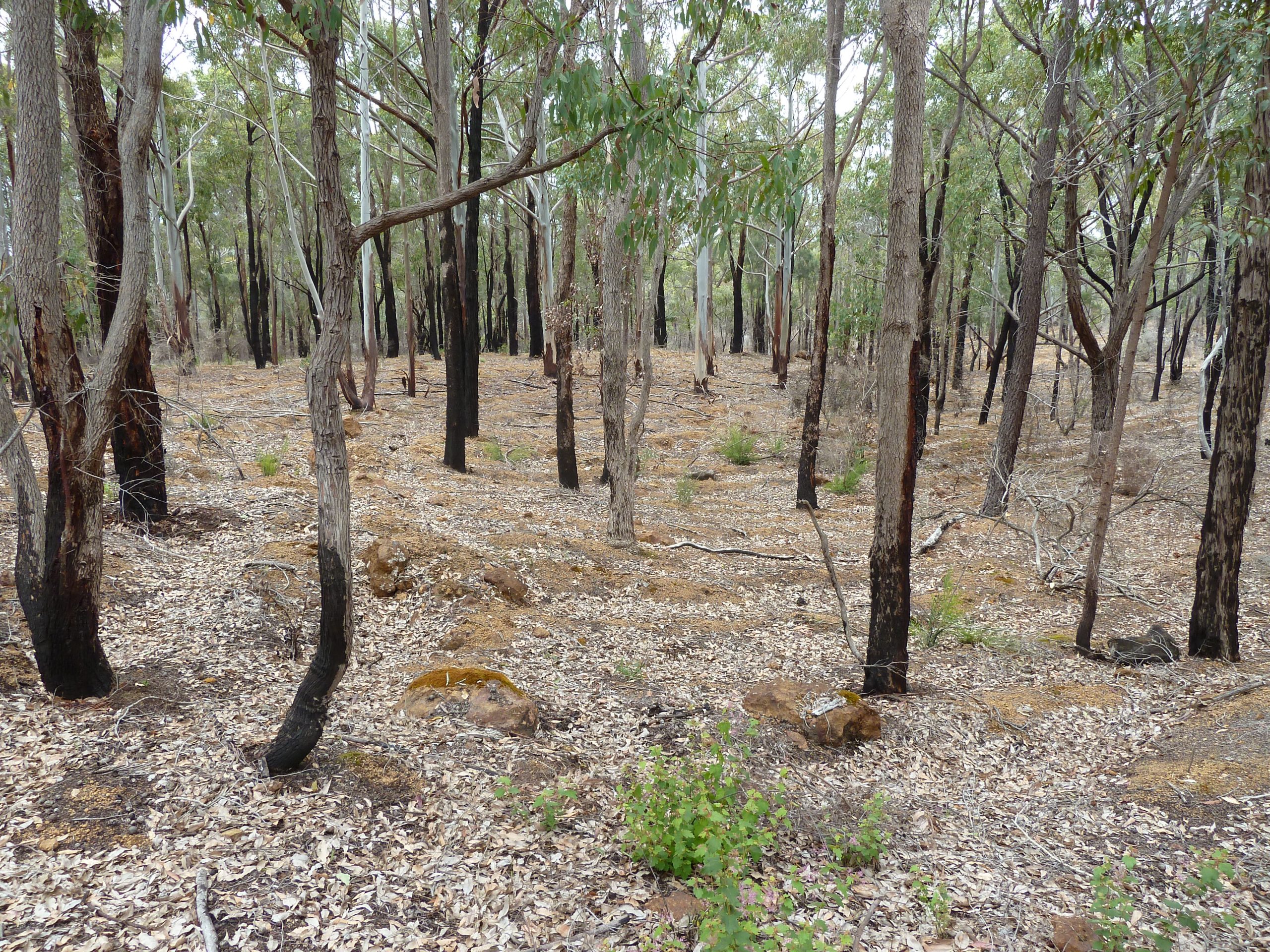
A rehabilitated Jarrah Forest
Do the companies have to rehabilitate the mined land afterwards?
Yes, the companies rehabilitate the land they have cleared and mined for bauxite. Originally, Alcoa planted exotic tree species – pine and eastern state eucalypts – on its mine sites. In the 1990s, after doing this for some 25 years, the rehabilitation goal changed to one of growing back a self-sustaining jarrah forest that matches (as close as possible) the structure and species composition of the forest before it was mined. To date, none of Alcoa’s 28,000 ha of rehabilitation has met this ‘completion criteria’.
Isn’t the Northern Jarrah Forest already suffering from heat and drought stress? Is mining making that worse?
Yes, the Northern Jarrah Forest is suffering from heat stress and drought from climate change. Mature, large trees that provide vital habitat are dying, resulting in forest collapse. Short, multi-stemmed young trees are taking their place, dramatically changing the ecosystem structure. Mining and extensive clearing is releasing further carbon into the atmosphere, making the remaining Jarrah forest more susceptible to collapse due to an increasingly hot and dry climate.
What's the risk to Perth's drinking water?
Alcoa is mining in catchment areas that members of the public are not allowed to walk into. In 2021, Water Corporation asked Alcoa to stop mining near
Serpentine Dam as this posed unacceptable risks of toxic runoff. Serpentine Dam supplies about 18 percent of Perth’s water supply.
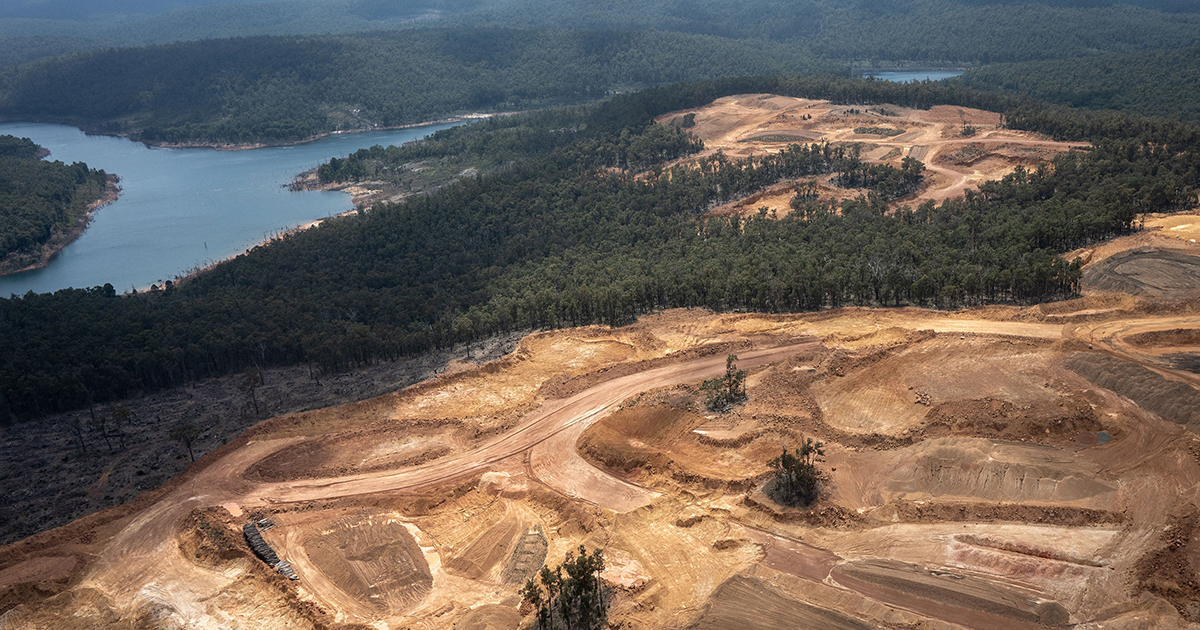
Cleared Jarrah forest for a bauxite mine close to Serpentine Dam (Image: #MilesTweediePhotography)
Learn more
WAFA, Wilderness Society and Conservation Council of WA have published this report to provide information and analysis regarding the impacts of bauxite mining in the Northern Jarrah Forests.
The Northern Jarrah Forests are one of a handful of Australian ecosystems under particular threat of collapse due to climate change. They are highly diverse and home to an incredible number and variety of plants and animals as well as being vital
to water quality and supply for the Perth metropolitan region and South West forests.
West Australians are increasingly concerned with the protection of this magnificent place. The report provides both an overview and high level of detail on the region and the threat posed by proposed mining expansions.
It will assist in advocacy, research and communication as we work towards the protection of the Northern Jarrah Forests in secure conservation areas.
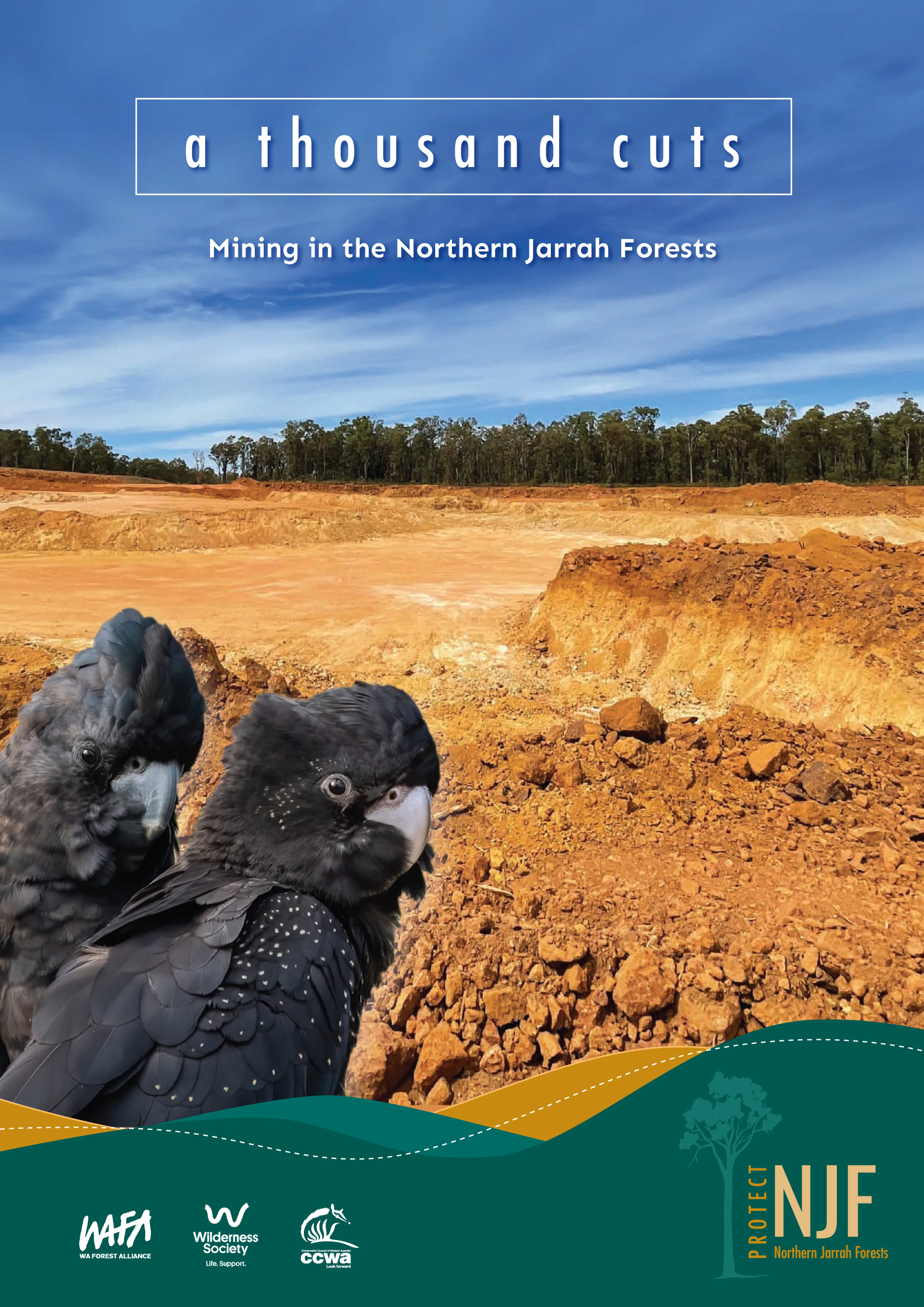
About Us
End Forest Mining is an alliance of many groups, representing tens of thousands of people, and growing. We are calling on the WA Government to end forest mining and safeguard WA’s magnificent forests in protected areas.
Latest News
Alcoa Public Comment Period: What’s Next?
It’s official: Together, we’ve broken the EPA record, with more than 59,000 submissions on Alcoa’s forest mining. Thank you to everyone, each and every person who made a submission and was part of the campaign. To all those who attended the End Forest Mining...
Outrage over Alcoa’s ‘greenwashing’ of its jarrah forest strip mining through Kings Park festival sponsorship
Image: #MilesTweediePhotographyAn alleged agreement between Alcoa and the Botanic Gardens and Parks Authority Board for the US mining giant to be a diamond sponsor of the annual Everlasting Spring Festival event at Kings Park has been described as a classic case of...
US mining giant Alcoa’s greenwashing advertising campaign breaches Ad Standards Australia’s Environmental Code
Ad Standards Australia has upheld a claim that a recent advertising blitz by Alcoa to support its proposed expansion of bauxite mining in Perth’s unique Northern Jarrah Forest breached 80% of the Environmental Code: Sections 1, 2, 3 and 4. This landmark decision...
